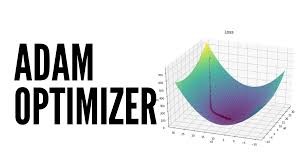A Brief History of Adam
Adam (Adaptive Moment Estimation) was introduced by Diederik P. Kingma and Jimmy Ba in 2014. By combining ideas from momentum and RMSProp, Adam emerged as one of the most effective and widely used optimisation algorithms for training machine learning models. Since its inception, it has revolutionised deep learning by enabling faster and more accurate model training.
What Is Adam?
Imagine driving with a smart GPS that adjusts your speed and direction based on changing road conditions. Adam functions similarly in machine learning optimisation: it dynamically adjusts learning rates for each parameter using estimates of both gradients and their squared magnitudes. This ensures efficient, precise updates and smoother convergence during training.

Why Is Adam Used?
Adam tackles key challenges in optimisation, making it a preferred choice for deep learning:
- Efficient Convergence: Combines adaptive learning rates with momentum to accelerate training.
- Sparse Gradients: Excels in scenarios where updates are infrequent, such as natural language processing.
- Scalability: Performs effectively across diverse model architectures and datasets.
How Is Adam Used?
Adam is seamlessly integrated into machine learning frameworks. Here’s how it is used in Keras:
- Define the Optimiser:
python
from tensorflow.keras.optimizers import Adam
optimizer = Adam(learning_rate=0.001)
- Compile the Model:
python
model.compile(optimizer=optimizer, loss='categorical_crossentropy', metrics=['accuracy'])
- Train the Model:
python
model.fit(X_train, y_train, epochs=10, batch_size=32)
Different Variants of Adam
- AdamW: Incorporates weight decay to prevent overfitting.
- AdaMax: A more stable variant for models with large parameter updates.
- Nadam: Combines Nesterov Momentum with Adam for faster convergence.
Key Features of Adam
Adam offers the following benefits:
- Adaptive Learning Rates: Dynamically adjusts learning rates for each parameter.
- Momentum Integration: Incorporates gradient momentum for smoother updates.
- Bias Correction: Minimises initialisation errors by adjusting gradient estimates.
Tools and Software for Adam
Adam is supported across major machine learning libraries:
- TensorFlow/Keras: Includes Adam as a default optimiser for deep learning.
- PyTorch: Provides a configurable Adam optimiser for custom implementations.
- Scikit-learn: Integrates Adam in its neural network modules.
Applications in Australian Governmental Agencies
Adam’s versatility makes it a critical tool for various sectors in Australia:
- Healthcare Analytics (AIHW):
- Application: Trains deep learning models to predict patient outcomes and assess disease risks efficiently.
- Public Transport Planning (Transport for NSW):
- Application: Optimises route prediction and scheduling models for real-time traffic management.
- Environmental Monitoring (CSIRO):
- Application: Enhances AI models to predict climate change impacts and improve resource management.
Key Statistics and Global Impact
- Global Usage:
- According to a 2023 Statista report, Adam is the most widely used optimiser in deep learning, applied in over 60% of neural network projects worldwide.
- Local Impact (Australia and New Zealand):
- The Australian Institute of Machine Learning (AIML) reported that adopting Adam reduced model training durations by 30% and improved accuracy by 15% in public-sector AI initiatives.
Conclusion
Adam has transformed deep learning optimisation with its adaptive learning rates and momentum integration. Whether in healthcare, transport, or environmental analysis, Adam empowers machine learning models to perform efficiently and accurately. With widespread support in tools like TensorFlow, PyTorch, and Keras, it remains an indispensable part of modern AI workflows.
How interested are you in uncovering even more about this topic? Our next article dives deeper into [insert next topic], unravelling insights you won’t want to miss. Stay curious and take the next step with us!








